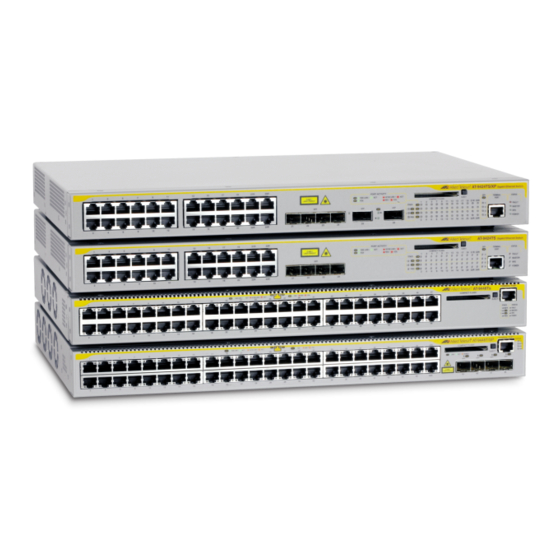
Allied Telesis AT-9400 Manuals
Manuals and User Guides for Allied Telesis AT-9400. We have 1 Allied Telesis AT-9400 manual available for free PDF download: User Manual
Allied Telesis AT-9400 User Manual (668 pages)
Menus User’s Guide For Stand-alone AT-9400 Switches Version 2.2.0 for AT-9400 Layer 2+ Switches Version 3.2.0 for AT-9400 Basic Layer 3 Switches
Brand: Allied Telesis
|
Category: Software
|
Size: 3 MB
Table of Contents
-
Preface
19 -
-
-
Port Type64
-
-
-
-
-
-
-
-
Guidelines176
-
-
-
Guidelines179
-
-
-
-
-
Creating an ACL232
-
Modifying an ACL235
-
Deleting an ACL237
-
Displaying Acls240
-
-
-
Configuring Cos244
-
-
-
-
-
-
-
-
Configuring STP422
-
Configuring RSTP430
-
Point-To-Point436
-
-
-
Displaying Vlans485
-
Displaying Pvids492
-
-
Configuring GVRP496
-
-
-
-
-
Section VIII559
-
-
-
-
-
Configuring SSL632
-
-
Index
661
Advertisement
